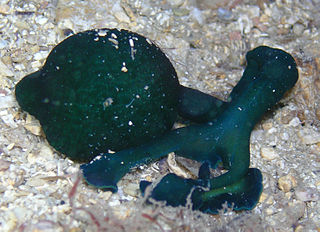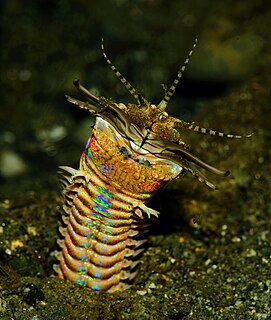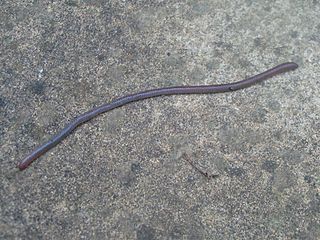 W
WAphragmophora is an order of sagittodieans in the phylum Chaetognatha.
 W
WMilnesiidae is a family of tardigrades of the class Eutardigrada.
 W
WBranchiobdellida is an order of freshwater leech-like clitellates that are obligate ectosymbionts or ectoparasites, mostly of astacoidean crayfish. They are found in the Northern Hemisphere and have a holarctic distribution in East Asia, the Euro-Mediterranean region and North and Central America, with the greatest species diversity being in North and Central America.
 W
WCanalipalpata, also known as bristle-footed annelids or fan-head worms, is an order of polychaete worms, with 31 families in it including the suborder Sabellida (families Serpulidae and Sabellidae and the Alvinellidae, a family of deep-sea worms associated with hydrothermal vents.
 W
WThe Chaetonotida is an order of gastrotrichs. They generally have a tenpin or bottle-like shape.
 W
WCheilostomatida is an order of Bryozoa in the class Gymnolaemata.
 W
WThe Ctenostomata are an order of bryozoans in the class Gymnolaemata. The great majority of ctenostome species are marine, although Paludicella inhabits freshwater. They are distinguished from their close relatives, the cheilostomes, by their lack of a calcified exoskeleton. Instead, the exoskeleton is chitinous, gelatinous, or composed only of a soft membrane, and always lacks an operculum. Colonies of ctenostomes are often composed of elongated, branch-like stolons, although more compact forms also exist.
 W
WCyclorhagida is an order of kinorhynchs, which are small marine invertebrates.
 W
WCyclostomatida, or cyclostomes, are an ancient order of stenolaemate bryozoans which first appeared in the Lower Ordovician. It consists of 7+ suborders, 59+ families, 373+ genera, and 666+ species. The cyclostome bryozoans were dominant in the Mesozoic; since that era, they have decreased. Currently, cyclostomes seldom constitute more than 20% of the species recorded in regional bryozoan faunas.
 W
WEchiniscoidea are an order of tardigrades, a phylum of water-dwelling, eight-legged, segmented micro-animals. It was first described by Richters in 1926.
 W
WEchiuroidea is an order of annelids in the class Polychaeta.
 W
WEunicida is an order of polychaete worms.
 W
WGolfingiida is an order of peanut worms. The tentacles form a circle around the mouth whereas those of the sister taxon, Phascolosomatidea, are only found above the mouth. Most species burrow in the substrate but some live in the empty shells of gastropods. It is the only order in the monotypic class Sipunculidea and contains the following families:Golfingiidae Phascolionidae Sipunculidae Rafinesque, 1814 Themistidae
 W
WThe Haplotaxida are one of two orders within the annelid subclass Oligochaeta, the other being the Lumbriculida. No real common name exists, but they are simply referred to as haplotaxids.
 W
WLimnodrilus hoffmeisteri, also known as red worm, is one of the most widespread and abundant oligochaetes in the world.
 W
WLimnognathia maerski is a microscopic platyzoan freshwater animal, discovered living in warm springs on Disko Island, Greenland in 1994, that has variously been assigned as a class or subphylum in the clade Gnathifera or as a phylum in a Gnathifera superphylum, named Micrognathozoa. It is related to the rotifers and gnathostomulids, grouped together as the Gnathifera. With an average length of one-tenth of a millimeter, it is one of the smallest animals known.
 W
WMacrodasyida is an order of gastrotrichs. Members of this order are somewhat worm-like in form, and not more than 1 to 1.5 mm in length.
 W
WNeoechinorhynchida is an order of parasitic worms from the. It contains 3 families:Dendronucleatidae Sokolovskaja, 1962 Neoechinorhynchidae Ward, 1917 Tenuisentidae Van Cleave, 1936
 W
WParachaela is an order of tardigrade in the class Eutardigrada.
 W
WPhragmophora is an order of sagittoideans in the phylum Chaetognatha.
 W
WPhyllodocida is an order of polychaete worms in the subclass Aciculata. These worms are mostly marine though some are found in brackish water. Most are active benthic creatures, moving over the surface or burrowing in sediments, or living in cracks and crevices in bedrock. A few construct tubes in which they live and some are pelagic, swimming through the water column. There are estimated to be about 3,500 species in the order.
 W
WPloima is an order of rotifers, microscopic invertebrates found in marine and freshwater habitats.
 W
WPhylactolaemata is a class of the phylum Bryozoa whose members live only in freshwater environments. Like all bryozoans, they filter feed by means of an extensible "crown" of ciliated tentacles called a lophophore. They live in colonies, each of which consists of clones of the founding member. Unlike those of some marine bryozoans, phylactolaemate colonies consist of only one type of zooid, the feeding forms known as autozooids. These are supported by an unmineralized "exoskeleton" made of gelatinous material or protein, secreted by the zooids.
 W
WSpionida is an order of marine polychaete worms in the infraclass Canalipalpata. Spionids are cosmopolitan and live in soft substrates in the littoral or neritic zones.
 W
WSpiriferida is an order of extinct articulate brachiopod fossils which are known for their long hinge-line, which is often the widest part of the shell. In some genera it is greatly elongated, giving them a wing-like appearance. They often have a deep fold down the center of the shell. The feature that gives the spiriferids their name ("spiral-bearers") is the internal support for the lophophore; this brachidium, which is often preserved in fossils, is a thin ribbon of calcite that is typically coiled tightly within the shell.
 W
WThe class Mesotardigrada has only one species, Thermozodium esakii. The animal has six claws of equal length at each foot. This species was recorded in 1937 by Rahm from a hot spring near Nagasaki in Japan. The type location has been destroyed by an earthquake and subsequent searches for specimens have been unsuccessful. The type specimen has also been lost, so the status of this class is considered dubious. However, Grothman et al. (2017) suggests that a type specimen was never collected, in line with lax taxonomic standards of the 1930s. Grothman et al. (2017) also suggests that they might have been misinterpreted heterotardigrades, possibly belonging to either Carphania or Oreella.